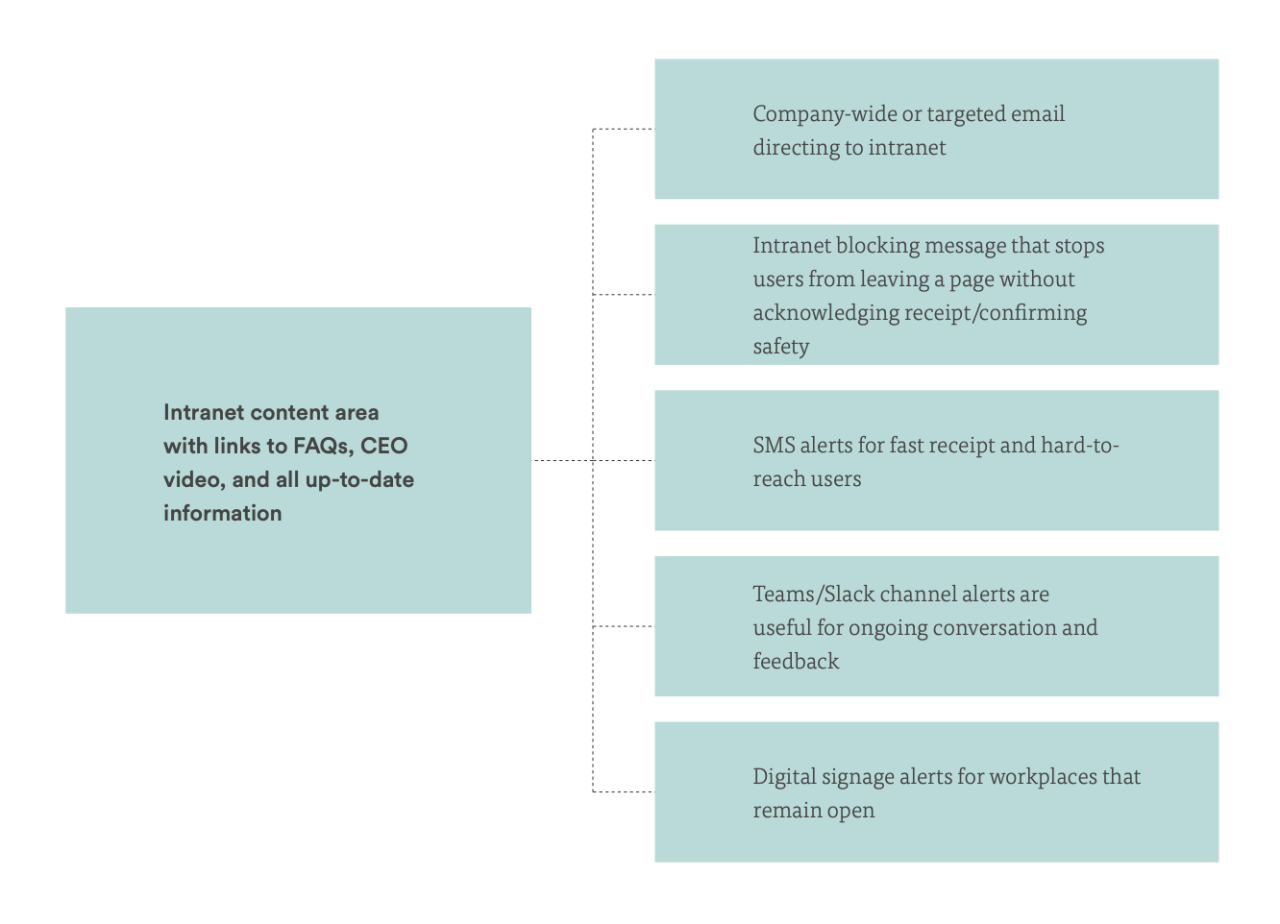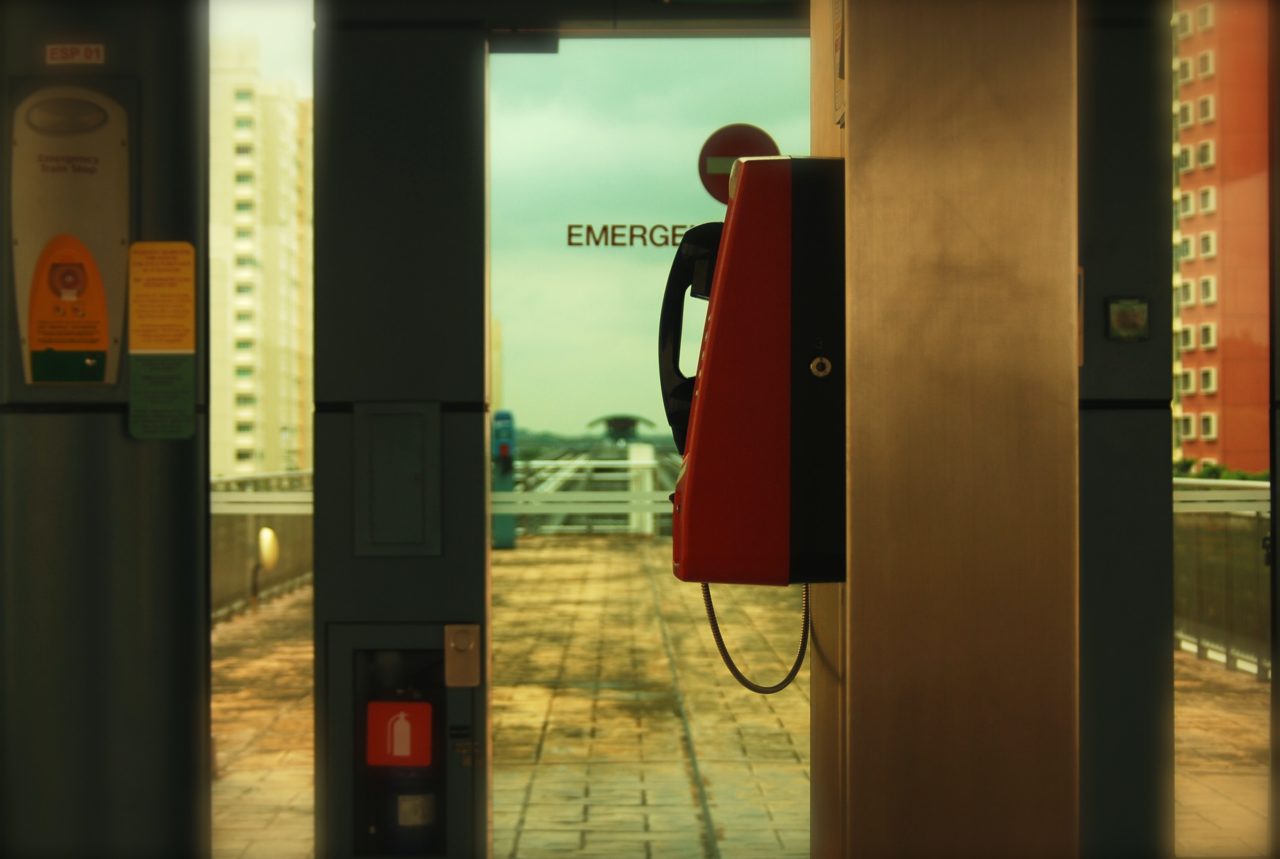Multichannel communications can prove critical when an emergency impacts your organization. This article explores the multichannel components of a successful emergency communications plan.
Emergencies can be hard to anticipate because they are so multifarious and fast-developing, but having a multichannel communications plan in place will help to ensure your comms reach people at the right time. This can be crucial to keeping everyone safe, connected, and united.
Preparing for any eventuality with a multichannel comms strategy
An effective internal emergency communication plan can ensure teams are prepared for a range of situations that may overlap in terms of response. Having the ability to reach different segments of your workforce with tailored comms that land at the right time, through their preferred channels, and in their native language, can be incredibly impactful, commanding attention when it is most necessary.
Multichannel communications: How to plan and execute a strategy
The first goal must be to make sure that all employees are safe and that they understand any immediate response taken by the organization. Are workplace locations now closed? Are they expected to continue working from home? How will this be managed if so? These questions will inevitably be among the earliest that communicators have to answer.
As the situation develops there will be additional objectives, such as:
- Ensuring business continuity
- Providing access to local/remote resources
- Connecting teams through improved software
- Raising morale
All of these goals will require the input and alignment of departments across the organization.
What to communicate in your emergency comms plan

Handling comms during an emergency can be stressful and chaotic. So, having a checklist of essential information your people need, or quickly brainstorming with a pre-selected crisis committee, can help to get your comms off the ground quickly. Typically, you’ll want to communicate:
- An overview of the situation – some employees may be unaware
- Directions for line managers to check the safety of their direct reports
- Guidelines for all staff on how to mark themselves as safe
- Who to contact if they need more information or have questions
- Who to contact if they have important information relating to the emergency that the organization may not have
- Documentation on relevant internal processes and protocols around the behaviors expected of them during the emergency
- Any agreed messaging or instructions around speaking to external parties about the situation
The World Health Organization also shares some helpful tips to consider when formulating an emergency communications plan.
Essential tools for multichannel emergency communications

Reaching employees with urgent messaging can be challenging for organizations that are dispersed across different locations and time zones, and the challenge of communicating quickly can be exacerbated by having to translate communications into different languages.
Many communicators in dispersed organizations will rely on an intranet as the natural home for communications because they offer the ability to host and update accessible information on the intranet software itself. However, this approach doesn’t guarantee that your people will see the urgent messaging you need them to read in an emergency. This is where a modern intranet with a multichannel CMS ensures vital ‘push’ comms cut through the noise and reach the right people when it matters.
Multichannel communications: How to plan and execute a strategy
In addition to creating a relevant content area or landing page, a multichannel intranet allows communicators to reach their people through the following means:
- SMS
- Slack and Teams (push into channels)
- Digital signage
- Homepage lockout (pop-up with acknowledgment tracking on desktop/native apps)
- Homepage banners (desktop/native apps)
Granular audience segmentation allows communicators to share different messaging with dynamic groups such as all managers in a specific region, and these groups can be created quickly and easily from employee metadata without input from the IT team.
Homepage configuration is also a useful way of ensuring different messaging reaches different segments of the workforce. This allows areas of an intranet homepage to be tailored towards users based on their location or position in the business, adding to the likelihood of communications being received urgently.
A multichannel strategy for communicating in an emergency

Employees will have different circumstances affecting how you reach them in a critical situation,
which makes having a multichannel strategy essential. You may have individuals based at home or out on the road; in different offices or time zones; non-desk employees without easy access to a computer or those who don’t speak the language of those at HQ.
Multichannel communications: How to plan and execute a strategy
Grouping those individuals and considering their unique needs ahead of time will help you identify communication gaps that could cause issues. With these groups and individuals in mind, implementing a multichannel comms approach is more likely to get the message out when it matters. Including everything from email and intranet posts to SMS, digital signage, and third-party collaboration tools will ensure everyone is reached.
In addition to comms that happen during an event, HR and safety policies for catastrophic situations should be up-to-date and easily accessible. Including these policies and procedures during onboarding is one way of embedding knowledge, but regular training or awareness-raising exercises that include quizzes or polls can also help to keep the information front of mind.

Looking ahead with hope
It’s difficult to predict what’s around the corner, but one thing we know is certain is that a multichannel communications plan can prove extremely beneficial when an emergency unfolds. We hope this blog has provided some inspiration around communicating effectively in difficult times.



